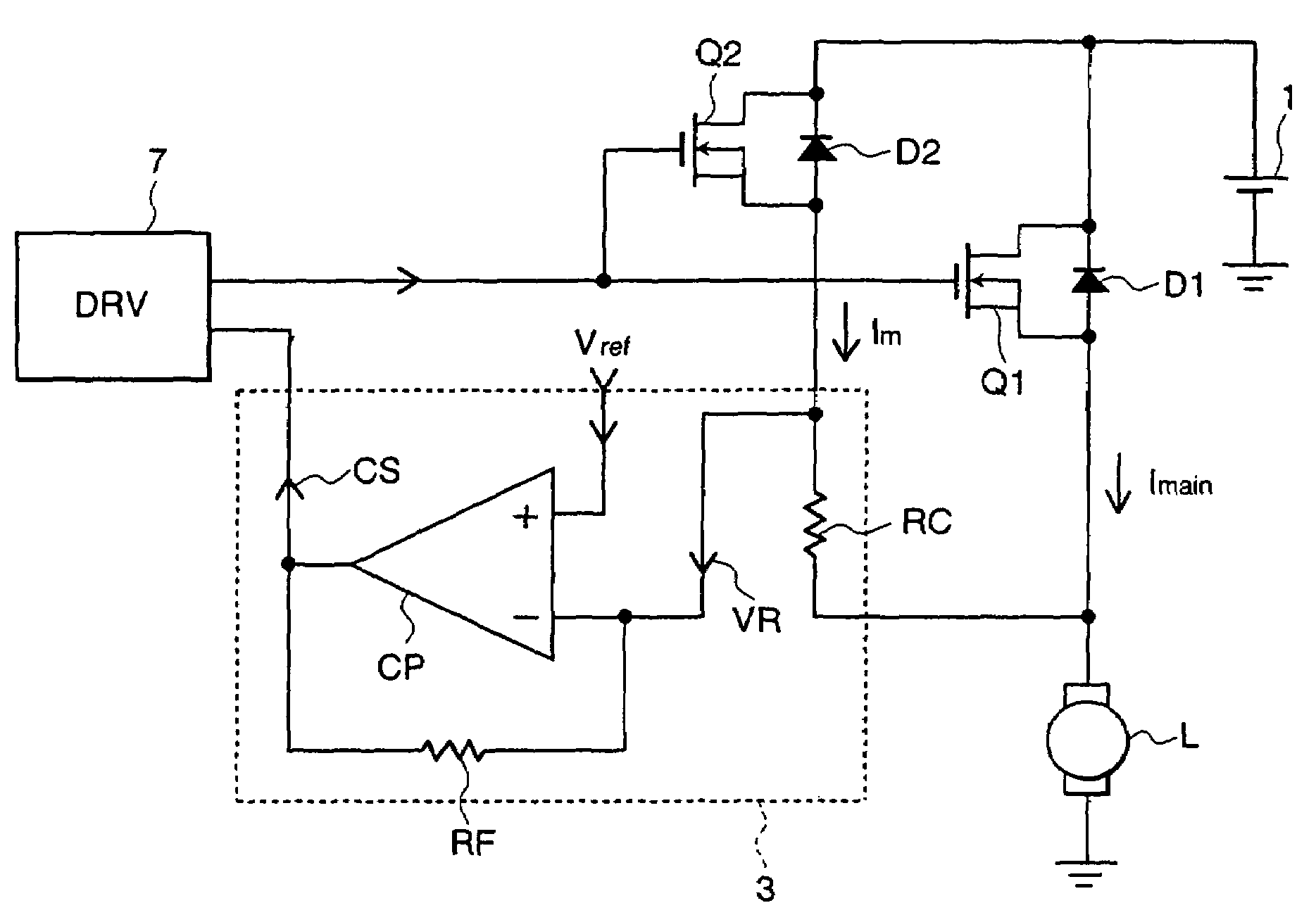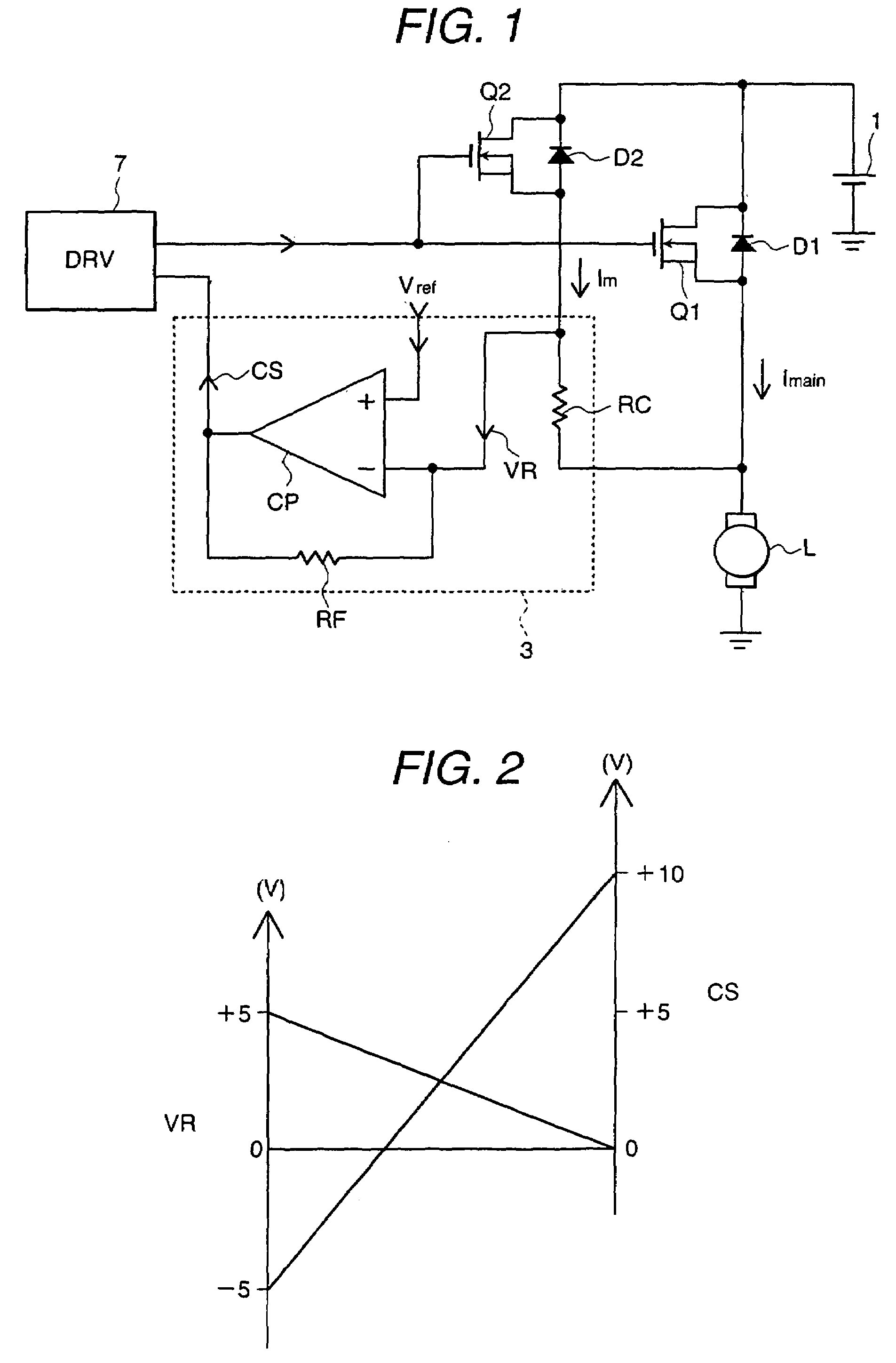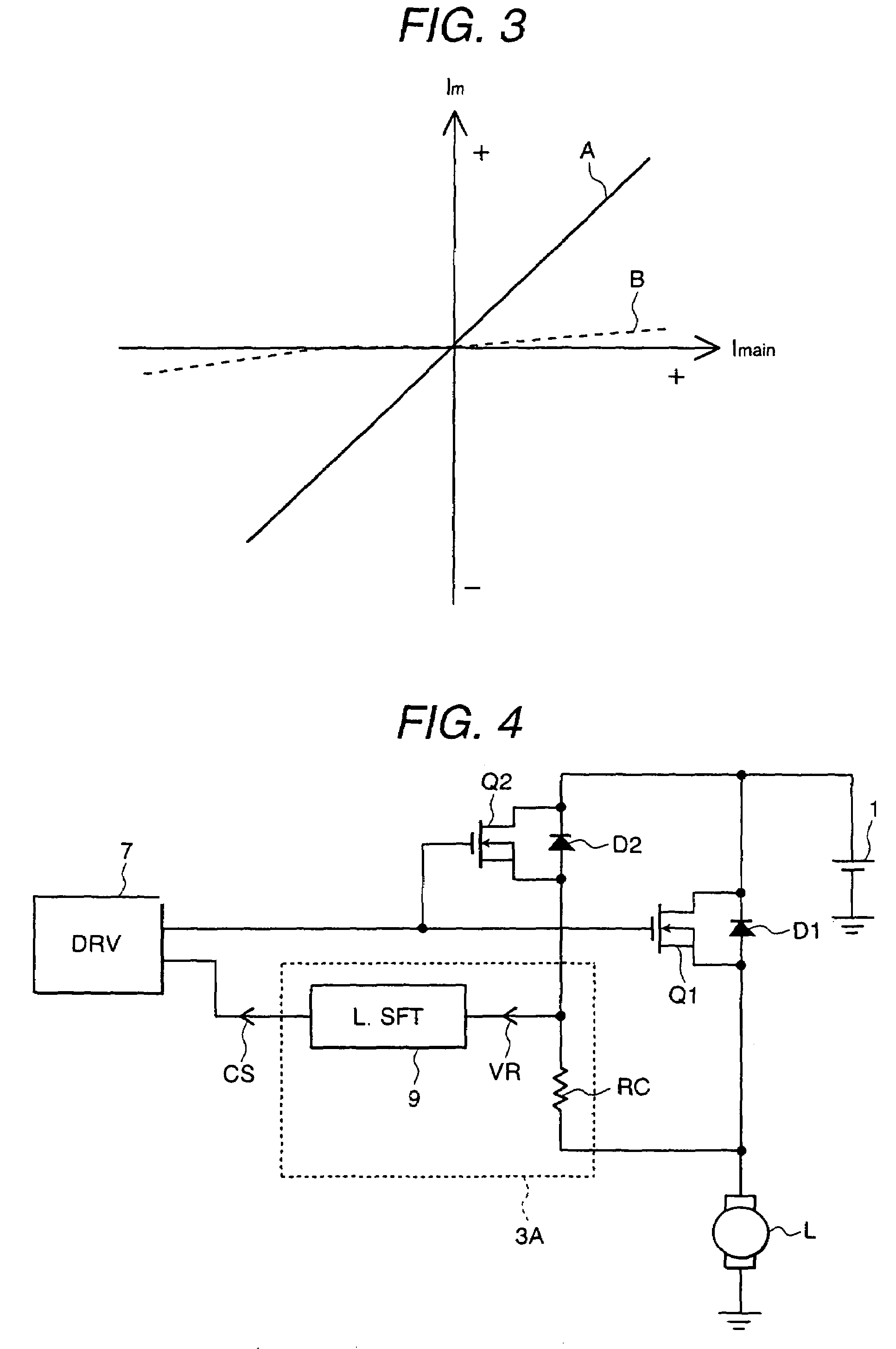Current sensor using mirror MOSFET and PWM inverter incorporating the same
a current sensor and mirror mosfet technology, applied in process and machine control, process control, instruments, etc., can solve the problems of thermal breakdown, increase the cost of current sensor and the size of pwm inverter, and the inability of the method to detect both a current in the positive direction and a current in the negative direction, and achieve the effect of small and inexpensive pwm inverter
- Summary
- Abstract
- Description
- Claims
- Application Information
AI Technical Summary
Benefits of technology
Problems solved by technology
Method used
Image
Examples
first embodiment
[0047]Hereafter, with reference to FIGS. 1 through 3, the configuration of a current sensor according to the present invention will be described.
[0048]FIG. 1 is a circuit diagram that shows the configuration of a current sensor according to a first embodiment of the present invention. FIG. 2 is an explanatory diagram that explains characteristics of an inverting amplifier circuit used for a current sensor according to a first embodiment of the present invention. FIG. 3 is an explanatory diagram that explains operations of a current sensor according to a first embodiment of the present invention.
[0049]Power MOSFET Q1 and mirror MOSFET Q2 shown in FIG. 1 are created on the same chip. Due to the MOSFET structure, the power MOSFET Q1 and the mirror MOSFET Q2 have parasitic diodes D1 and D2, respectively. Each drain electrode of the power MOSFET Q1 and the mirror MOSFET Q2 is connected to a DC power source 1, and each gate electrode is connected to a driving device (DRV) 7. A current sen...
second embodiment
[0064]Next, with reference to FIGS. 4 and 5, the configuration of a current sensor according to the present invention will be described.
[0065]FIG. 4 is a circuit diagram that shows the configuration of a current sensor according to a second embodiment of the present invention. FIG. 5 is an explanatory diagram that explains characteristics of the level shift circuit used for a current sensor according to a second embodiment of the present invention. Moreover, items in FIGS. 4 and 5 are identical to those in FIG. 1 when the same alphanumeric characters appear.
[0066]As shown in FIG. 4, in this embodiment, a current detection circuit 3A consists of a level shift circuit 9 and a current detection resistor RC. Herein, the resistance value of the current detection resistor RC is specified in the same manner as the current sensor 3 shown in FIG. 1.
[0067]As FIG. 5 shows, when voltage signal VR of the current detection resistor RC changes, for example, from −5 V to +5 V, the level shift circu...
third embodiment
[0069]Next, with reference to FIG. 6, the configuration of a current sensor according to the present invention will be described.
[0070]FIG. 6 is a circuit diagram that shows the configuration of a current sensor according to a third embodiment of the present invention. Items in FIG. 6 are identical to those in FIG. 1 when the same alphanumeric characters appear.
[0071]In this embodiment, a current sensor 3B consists of only a current detection resistor RC. Herein, the resistance value of the current detection resistor RC is specified in the same manner as the current sensor 3 shown in FIG. 1. Voltage signal VR of the current detection resistor RC is directly inputted into the driving device 7A.
[0072]On the other hand, the driving device 7A is driven by a positive power supply VB+ and a negative power supply VB−. This enables the driving device 7 to capture both positive and negative voltage signals VR, thereby accurately detecting currents that flow through the power MOSFET Q1 in bot...
PUM
 Login to View More
Login to View More Abstract
Description
Claims
Application Information
 Login to View More
Login to View More - R&D
- Intellectual Property
- Life Sciences
- Materials
- Tech Scout
- Unparalleled Data Quality
- Higher Quality Content
- 60% Fewer Hallucinations
Browse by: Latest US Patents, China's latest patents, Technical Efficacy Thesaurus, Application Domain, Technology Topic, Popular Technical Reports.
© 2025 PatSnap. All rights reserved.Legal|Privacy policy|Modern Slavery Act Transparency Statement|Sitemap|About US| Contact US: help@patsnap.com



